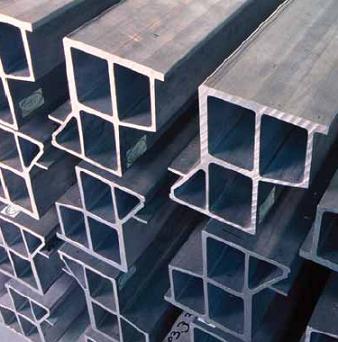
SGX-listed Midas Holdings designs and manufactures aluminium alloy products (above) for the production of train carriages.
BY YEAR-END 2008, China already had 29 key subway lines with 10 cities having a total of 776 kilometers of track. Annually, subway cars carried passengers on 2.21 bln separate trips last year.
Beijing, Shanghai and 15 other cities have a total of 50 tracks and 1,154 km of lines still under construction, said Mr. Lu Kehua, director of the urban/rural section of the department of Construction Bureau at the State Council.
Currently, there are approximately 27 cities in the initial planning stages for launching their own subway systems. Among them, 22 have received start-construction approval from the State Council.
Up to 2015, Beijing, Shanghai, Guangzhou and 19 other cities will have built 79 subway lines totaling 2,260 km with total investment of 882.0 bln yuan.
Earlier this year, the National Development and Reform Commission's (NDRC) Mr. Wang Qingyun, director of the infrastructure department, said the commission has already approved – or is on the verge of approving – 23 urban subway projects.
Mr. Lu Kehua said that the above approved project tallies do not include those proposed subway systems still under construction.
This means that in 2015, China will have a total of 158 lines totaling 4,189 km.
According to information from industry insiders, the entire approval process exercised by the NDRC requires at least three levels of authorization, in addition to mandating that cities under consideration for a subway system must have at least three mln inhabitants and a gross domestic product (GDP) of over 100 bln yuan.
In addition, projects should receive at least 10 bln yuan from local financing.
And as for light rail urban lines, the required figures need only be 60% of those stipulated for subway lines. Currently, 50 cities across China have plans for such systems that meet or surpass all the above requirements.
Is the credit nightmare over?
Actually, this is not the first time in China’s relatively short period of rapid economic development that several cities have had simultaneous plans to develop their own subterranean mass transit systems.
Some cities have had such dreams for decades and railcars can already be heard rumbling beneath many of their major street-level thoroughfares.
Due to concerns that a herd mentality would ensue as cities sought to keep up with their peers in the public transport drive and the status and investment that such amenities bring, the State Council on at least two occasions issued a “stop work” order and a temporary moratorium on new project approvals to prevent a frenzied nationwide subway digging campaign from getting out of hand.
In 1995, directive No.60 of the State Council issued such a “stop work” order and put a freeze on new project approvals.
In October of 2002, the State Council once again ordered subway projects across the country to halt construction. Some of the more notable projects affected by this moratorium at the time were lines in Hangzhou, Shenyang and Shanghai’s M8 line.
According to analysts, the main incentive for regulators to issue “stop work” orders is over fears that various subway projects have become bottomless pits with no clear timeframe for profitability, and with legacies that bequeath massive financial burdens to local communities for years on end.
According to industry insiders, 700 mln yuan of investment is required for each kilometer of track, which many city officials consider to be far too exorbitant and out of their respective budgets. This led to two embarrassing examples of half-finished projects in the mid-1990s due to a sudden drying up of funds in both Chongqing and Qingdao.
The conundrum is that a fast growing city economy will provide the required GDP to authorize a subway system, as well as a growing sense of pride mixed with some sense of entitlement among the hardworking denizens of the city.
But fast economic growth also encourages riskier lending practices on more generous terms that can backfire and leave city officials and planners red-faced as they stand over half-finished holes in their downtown centers.
“We are very happy to have this chance for development. If there was no global economic crisis, then applications and approvals would not be flowing in at this pace. It is both a function of the government’s drive to boost domestic demand and bolster the local economy,” said an expert on the ongoing Nanchang city subway project.

